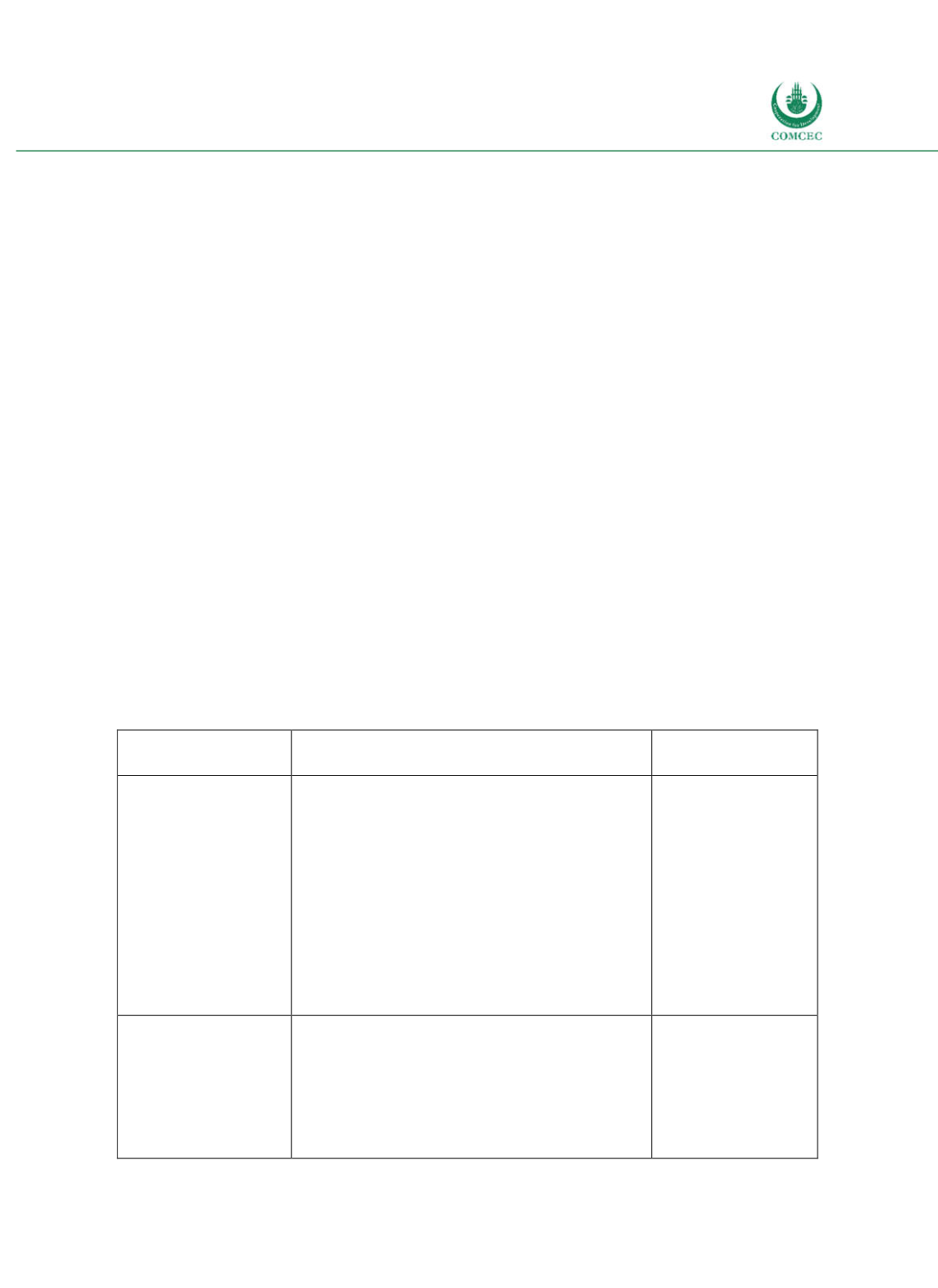

Improving Public Debt Management
In the OIC Member Countries
177
market, and the relative costs of borrowing at home and abroad. Likewise, a longer maturity
structure reduces the refinancing risk, but entails higher costs on average.
Islamic sovereign bonds (
sukuk
) are likely to gain greater popularity in OIC as well as nonOIC
countries. An important factor is the growing preference for
sharia
compliant finance products
by important international investors such as state funds. Moreover, the issuance of
sukuk
bonds can serve market development purposes by diversifying domestic capital markets and
attracting new (international) investors that wants to invest in sharia compliant financial
instruments from all over the world. Investors can also benefit from new sovereign
sukuk
issuances due to additional opportunities to diversify their portfolios. Hence, several OIC
member countries are planning to issue new sovereign
sukuk
or expand their already existing
portfolio. Infrastructure projects are especially suitable as underlying structures for sovereign
sukuk
given the assetbacked design of these bonds. In several Islamic markets, funding gaps
for infrastructure projects exist. Pairing the expected rise in infrastructure investments in
developing and emerging countries with the important role Islamic banking is playing in many
of these markets,
sukuk
issuances related to infrastructure are expected to further increase.
However, it should be noted that Islamic finance instruments do not necessarily minimize
financing costs as they often involve additional administrative expenses and greater legal and
accounting challenges. The limited tradability, the comparatively high issuance costs and the
rather small volume of existing
sukuk
may constrain market liquidity and hence a
government’s flexibility in conducting and financing fiscal policy measures. Hence, the issuance
of such bonds comes with both, risks and benefits. Overall, OIC member countries are
encouraged to assess their country's potential for issuing such bonds and (further) integrate
Islamic finance instruments into their public debt management practices, if possible.
Table 51 summarizes the main challenges and obstacles of public debt management in OIC
member countries.
Table 5-1: Challenges and Obstacles to Public Debt Management
Area vulnerable to
obstacles
Challenges
Examples of
countries facing risks
(1) Outside incidents
Macroeconomic shocks might affect the structure of
public debt.
Risks:
Exchange rate risk due to debt denoted in foreign
currency with rising interest rate
Higher refinancing risk for countries with short
maturity of debt and high annual debt rollover rate
Interest rate risk increases for debt held by the
private sector if adverse economic shocks occur
Risk enhanced by strong economic dependency on
exogenous variables, e.g. prices for natural
resources
Gambia, Mozambique,
Togo, Uganda, Sudan,
Saudi Arabia, Nigeria
(2) Institutional
framework
Coordination and responsibility issues concerning
public debt management
Risks:
Unclear institutional responsibilities for public debt
management
-
Information flow between the institutions may
not be ideal
Azerbaijan, Bahrain,
Chad, Kazakhstan,
Malaysia, Oman, Saudi
Arabia, Sudan, United
Arab Emirates
















